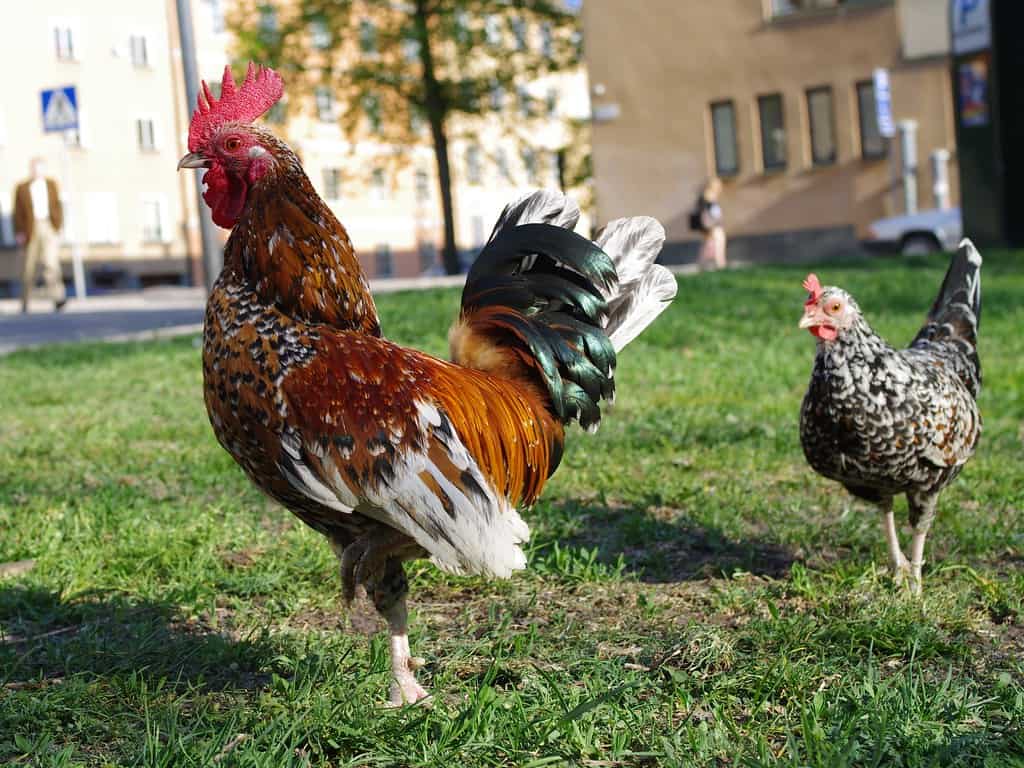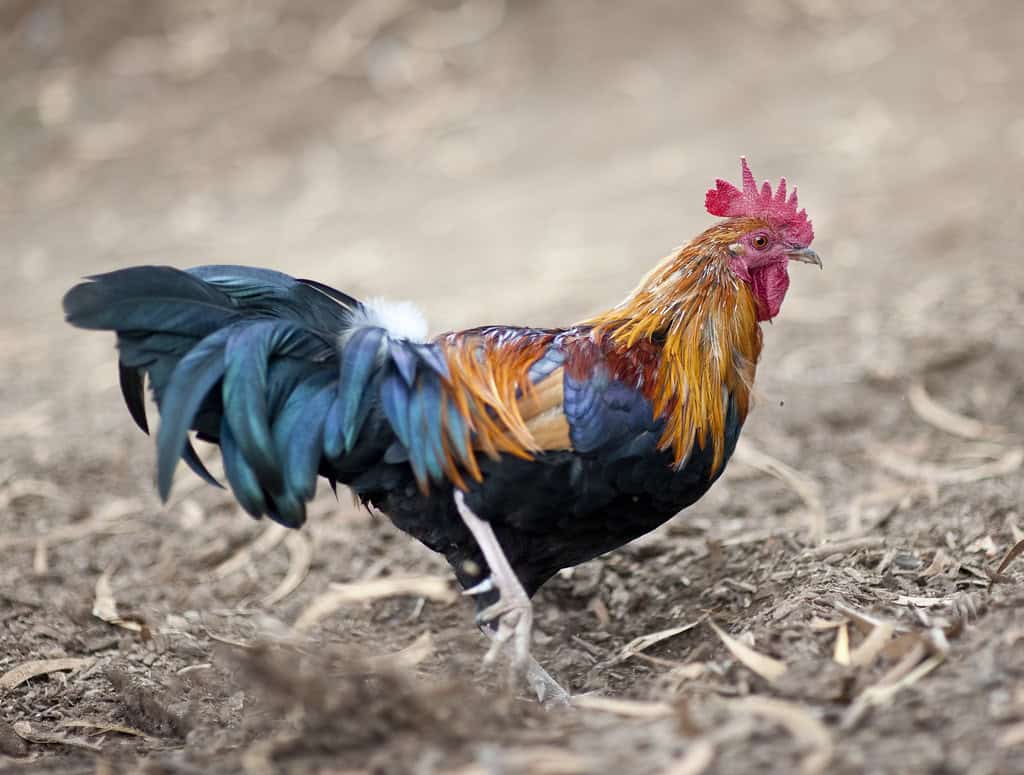Have you ever watched chickens and wondered what’s really going on in their feathered heads? These fascinating birds have been living alongside humans for thousands of years, yet many of us still scratch our heads when they start acting weird. From their morning announcements to their evening rituals, chickens have a rich language of behaviors that tell us everything about their mood, health, and social standing. Understanding these quirky habits isn’t just entertaining – it’s actually crucial for anyone who keeps chickens or simply loves observing wildlife. Whether you’re a seasoned poultry keeper or someone who just enjoys watching backyard birds, decoding chicken behavior opens up a whole new world of appreciation for these surprisingly complex creatures.
10. Dust Bathing – Nature’s Spa Treatment

Picture this: you walk into your backyard and see your chicken rolling around in the dirt like it’s having the time of its life. Before you panic thinking something’s wrong, take a deep breath – your bird is just enjoying a luxury spa day. Dust bathing is one of the most important behaviors chickens exhibit, and it’s absolutely essential for their health and happiness. They’ll dig shallow holes in dry soil, sand, or even wood ash, then wiggle and roll around until they’re completely covered in dust. This natural behavior helps them remove excess oils from their feathers, get rid of parasites like mites and lice, and regulate their body temperature. Think of it like their version of a shower – except instead of getting clean with water, they’re getting clean with dirt!
9. Pecking Order Establishment – The Ultimate Social Hierarchy

Ever heard the phrase “pecking order”? Well, it literally comes from chickens, and watching it in action is like observing a complex social drama unfold. Chickens establish a strict hierarchy within their flock, where every bird knows exactly where they stand in the social ladder. The top chicken gets first dibs on food, the best roosting spots, and respect from all the others below. You’ll see this behavior through gentle (and sometimes not-so-gentle) pecks, chest bumping, and positioning during feeding time. New chickens introduced to a flock will go through this sorting process, which can look dramatic but is completely natural. It’s fascinating how they maintain this order with such precision – like having an invisible organizational chart that everyone follows without question.
8. Wing Flapping Without Flying – The Chicken Workout

You might catch your chickens doing what looks like an enthusiastic attempt at flight, flapping their wings vigorously while staying firmly planted on the ground. Don’t worry – they’re not having an identity crisis or forgetting they can’t really fly like their wild cousins. This behavior is actually their way of exercising and stretching their wing muscles, similar to how we might stretch our arms after sitting too long. Wing flapping also helps them regulate their body temperature, shake off dust or debris, and sometimes it’s just a way to show excitement or dominance. Young chickens especially love doing this as they’re developing their muscles and coordination. It’s like watching someone do jumping jacks – pure exercise with a touch of showing off.
7. Head Tilting and One-Eye Looking – The Chicken Side-Eye

When a chicken tilts its head to look at something with just one eye, it might seem odd, but there’s actually brilliant science behind this behavior. Chickens have eyes positioned on the sides of their heads, which means they see the world differently than we do – they can’t focus both eyes on the same object directly in front of them like humans can. When they tilt their head, they’re trying to get a better look at something that’s caught their attention, using their superior side vision to examine it more closely. This one-eyed focus gives them incredibly detailed vision and helps them spot everything from tiny seeds to potential predators. It’s like they have built-in binoculars, but they need to adjust their head position to activate them properly.
6. Scratching and Foraging – The Eternal Treasure Hunt

Watch any chicken for more than five minutes, and you’ll see them scratching at the ground with an intensity that would make archaeologists jealous. This constant scratching and pecking isn’t random – it’s a deeply ingrained foraging behavior that’s remained unchanged for thousands of years. Chickens use their strong feet to scratch backward, uncovering hidden treats like bugs, worms, seeds, and other tasty morsels buried in the soil. Even well-fed chickens with unlimited access to food will spend hours doing this because it’s not just about finding food – it’s about mental stimulation and following their natural instincts. Think of it as their version of a treasure hunt that never ends, where every scratch might reveal something delicious or interesting.
5. Preening and Feather Maintenance – Personal Grooming Time

Chickens are surprisingly vain creatures who spend a considerable amount of time each day working on their appearance. Preening involves carefully arranging their feathers, removing dirt and debris, and distributing oils from a special gland near their tail throughout their plumage. You’ll see them contorting into seemingly impossible positions to reach every feather, using their beaks like precision tools to zip and unzip their feathers back into perfect condition. This behavior isn’t just about looking good – properly maintained feathers are crucial for insulation, waterproofing, and flight capability. A chicken that stops preening is often a sick chicken, making this behavior an important health indicator for anyone keeping these birds.
4. Roosting and Huddling Together – The Ultimate Sleepover

As evening approaches, you’ll notice your chickens naturally gravitating toward elevated perches where they’ll settle in for the night, often pressed close together like feathered sardines. This roosting behavior comes from their wild ancestors who slept in trees to avoid ground predators, and even domesticated chickens retain this strong instinct. The huddling isn’t just about warmth – though that’s certainly part of it – it’s also about security and social bonding. Chickens feel safest when they’re together and up high, where they can spot danger approaching from any direction. The way they jostle for the best spots and arrange themselves in a specific order tells you everything about their social relationships and individual personalities within the flock.
3. Vocalizations and Calling – The Chicken Communication Network

Chickens are much more talkative than most people realize, with a complex vocabulary that includes everything from soft purrs to urgent alarm calls. Each sound has a specific meaning – contented clucks while foraging, excited chatter when they find something tasty, warning calls when they spot a hawk overhead, and even different calls for ground versus aerial predators. Mother hens have an especially rich repertoire of sounds for communicating with their chicks, including calls that mean “come here,” “stay close,” and “danger, hide now.” Learning to interpret these vocalizations is like understanding a foreign language, and once you crack the code, you’ll realize your chickens are constantly chatting about their daily experiences and looking out for each other’s safety.
2. Aggressive Displays and Territorial Behavior – When Chickens Get Feisty

Don’t let their fluffy appearance fool you – chickens can be surprisingly fierce when they need to be, especially when protecting their territory, food, or young. You might see aggressive displays that include puffing up their feathers to look bigger, lowering their heads with necks extended, and making direct eye contact with their opponent. Roosters are particularly dramatic with their aggressive displays, often dancing sideways with their hackle feathers raised and wings slightly spread to show off their size and strength. Even hens will get feisty when protecting their chicks or competing for resources, using quick pecks and chest bumps to establish dominance. While this behavior can look alarming, it’s usually more about posturing and establishing respect than causing actual harm.
1. Nesting and Egg-Laying Rituals – The Daily Drama

The most fascinating chicken behavior might be the elaborate ritual surrounding egg-laying, which turns even the calmest hen into a dramatic performer. Before laying, hens will spend considerable time searching for the perfect nesting spot, often checking multiple locations and rearranging nesting material with the precision of an interior decorator. Once they’ve settled in, they’ll often vocalize throughout the process, making soft murmuring sounds that seem to help them focus and relax. After successfully laying an egg, many hens will announce their accomplishment with proud, loud calls that seem to say “Look what I did!” to anyone within hearing distance. This entire process can take anywhere from 30 minutes to several hours, and watching it unfold gives you a real appreciation for the effort that goes into producing each egg.
Conclusion

Understanding chicken behavior transforms these common barnyard birds from simple egg-producers into the complex, social, and intelligent creatures they truly are. Each scratch in the dirt, every head tilt, and all those varied vocalizations tell a story about their needs, emotions, and relationships with both their flock and their environment. Whether you’re raising chickens in your backyard or simply observing them from afar, recognizing these behaviors helps you appreciate the rich inner lives of these remarkable birds. The next time you see a chicken dust bathing or hear one announcing the arrival of a fresh egg, you’ll know you’re witnessing thousands of years of evolutionary behavior in action. Isn’t it amazing how much personality can be packed into such a small, feathered package?
- 10 Common Chicken Behaviors and What They Mean - August 9, 2025
- 14 Creatures That Can Freeze and Thaw Back to Life - August 9, 2025
- 10 Animals That Risked Their Lives to Save Humans - August 9, 2025

